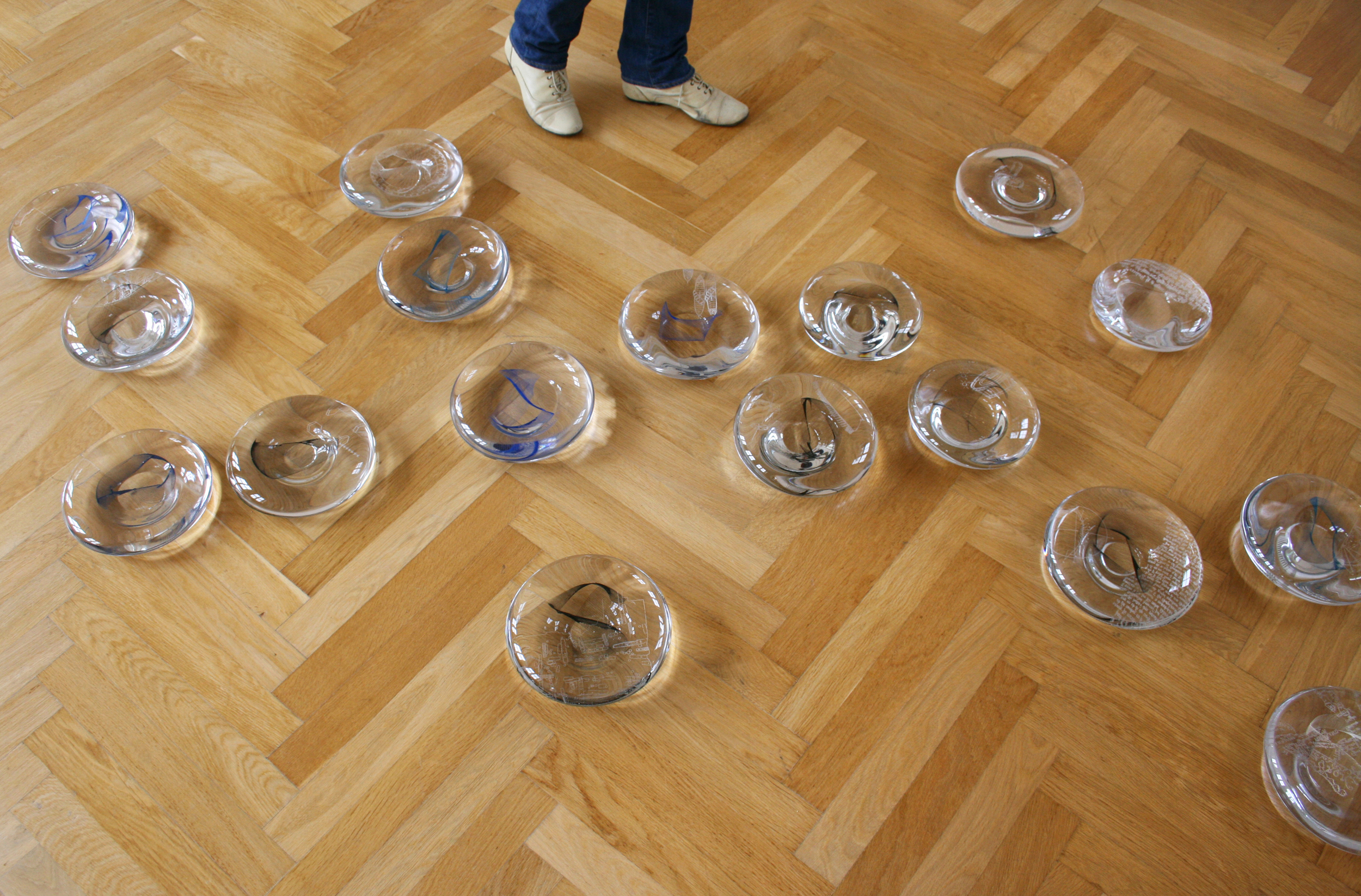Lost at Sea (Havvild), 2014
Hand-made glass lenses with prints of Viking Age nautical devices from the archaeologist Thorkild Ramskous’ books The Sun Compass (1982) and The Sun Stone (1969).
It is widely accepted that Vikings used sun-compasses to derive true directions from the cast shadow of a gnomon. It has been hypothesized that when a cast shadow was not formed, Viking navigators relied on crude skylight polarimetry with the aid of dichroic or birefringent crystals, called sunstones.
I am fascinated by the mystery and uncertainty that arise in any attempt to identify and determine historical fact or fiction. The sólarsteinn (sun stones) from the Viking Age are not known from actual archaeological finds. A piece of cordierite, still stuck on a piece of gneiss does not seem like anything noticeable, yet can be fully useful for navigational purposes and was, according to the Sagas, a shining stone "with which you can see where the sun is in the sky".
I use the optical effects and light-absorbing abilities of glass to tell sculptural tales of the sun stone and ways of navigating through the unknown.
The term Havvild means to lose one’s way at sea.




